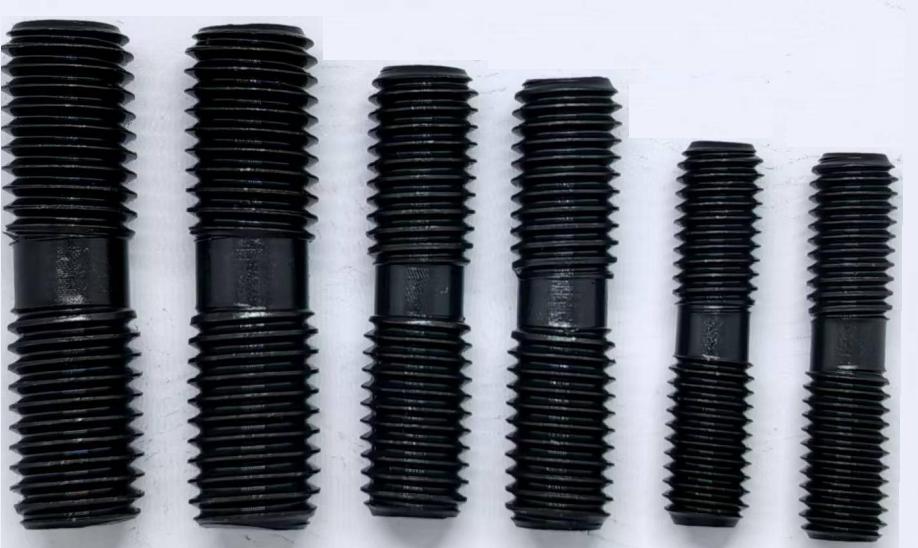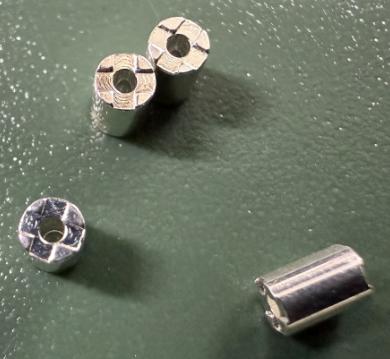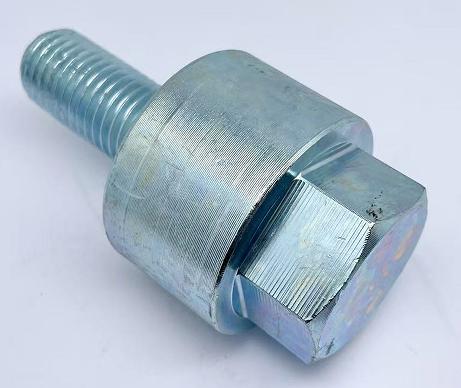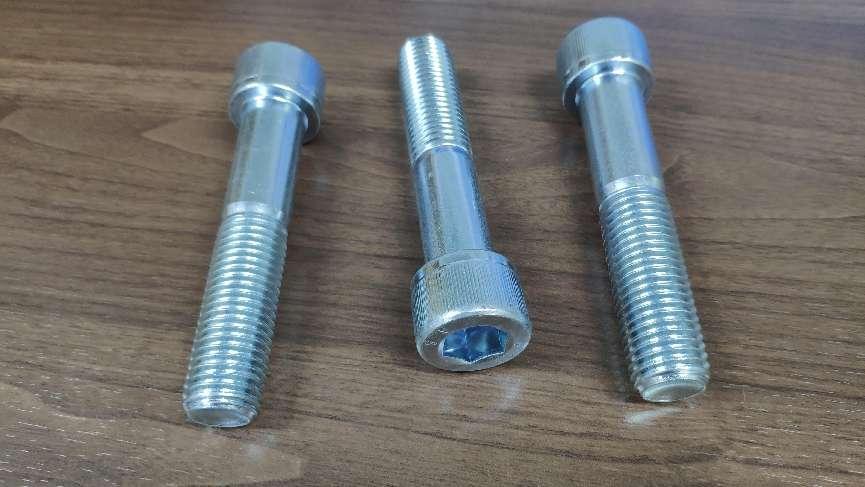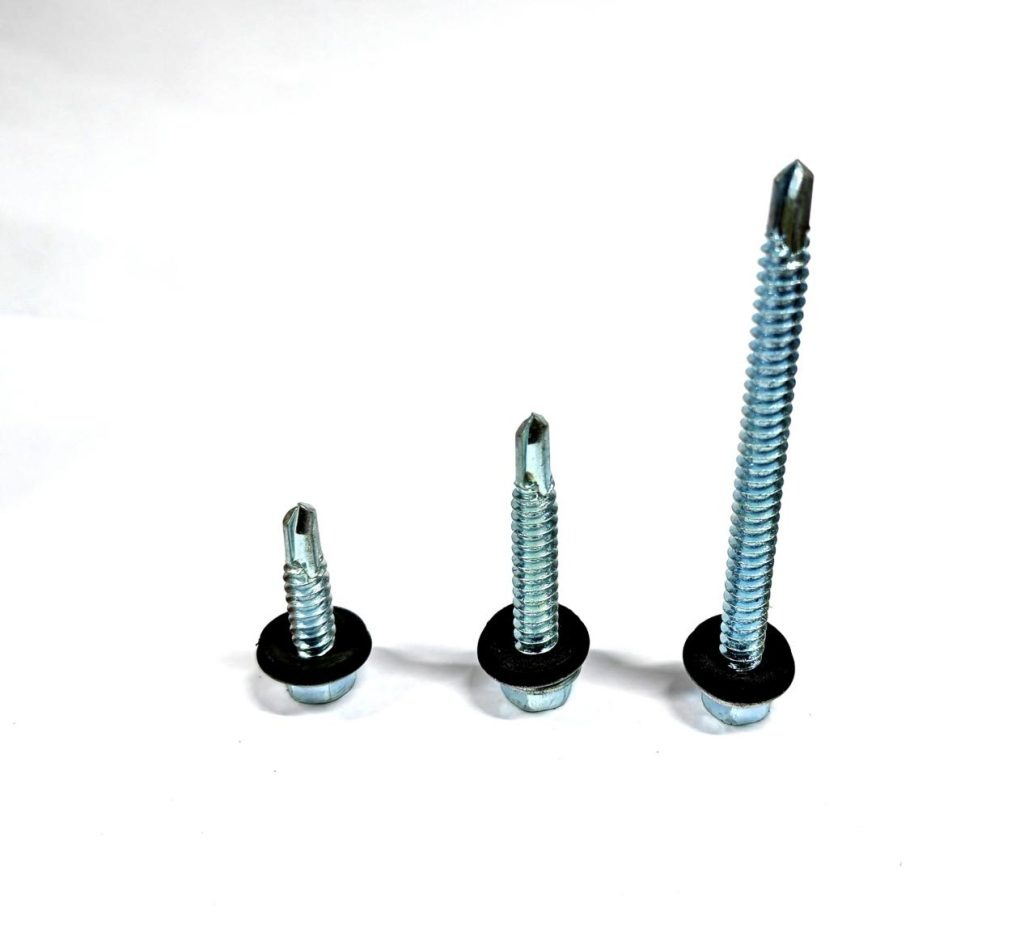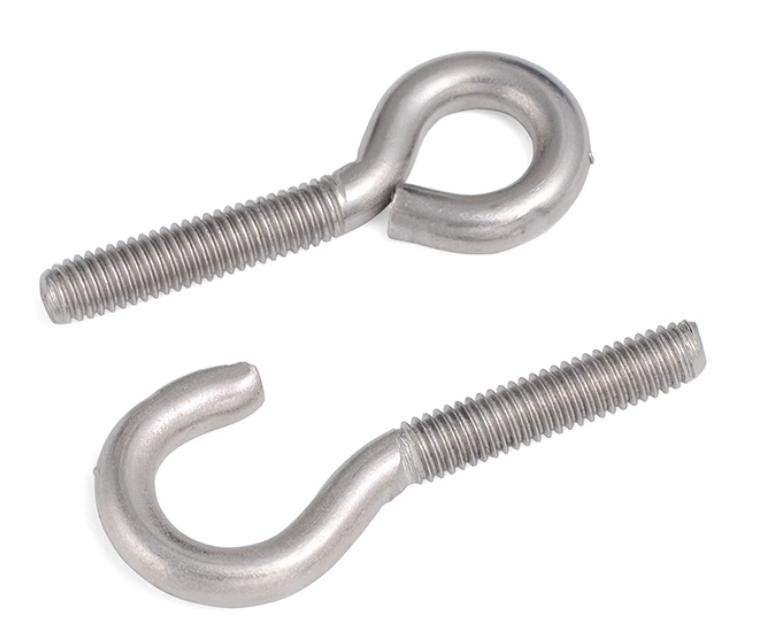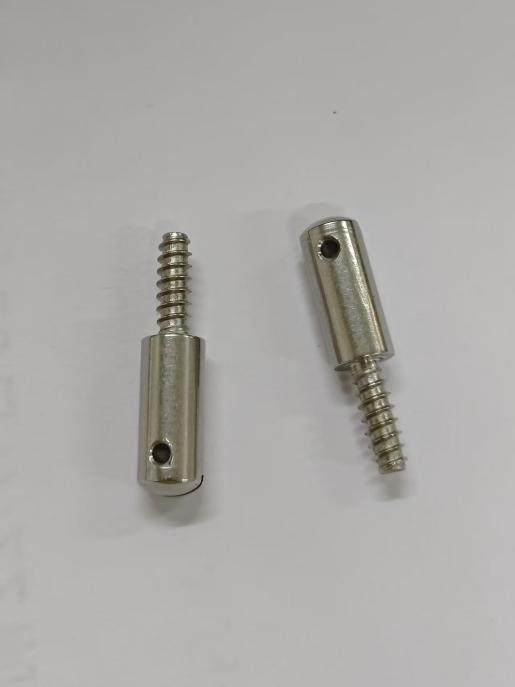What Type of Fastener is Suitable for Use in Wallboard
When it comes to construction or building work, wallboard (drywall) is one of the most widely used materials for interior walls. Selecting an appropriate type of fastener when installing it makes all the difference, not only does it improve the stability of the installation, but it protects against cracking of the wall or objects falling off as well. So, what type of fastener is suitable for use in wallboard? In this post, we will discuss in-depth analysis and offer more secure fastening options for your project.
Part 1. What is Wallboard?
Wallboard, sometimes referred to as wall plaster or gypsum board, is a light building product that has a gypsum core sandwiched between two special paper layers. It is widely utilized for interior walls and ceilings of residential houses, commercial buildings, and offices due to its light weight, easy installation, smooth surface, and economy.
While the gypsum core provides a measure of strength, the overall wallboard structure is not particularly strong and does not possess considerable tensile and shear resistance. Installation with normal screws or improper fasteners can generate problems such as fastener loosening, cracking of the board, or inability to support the load of mounted items.
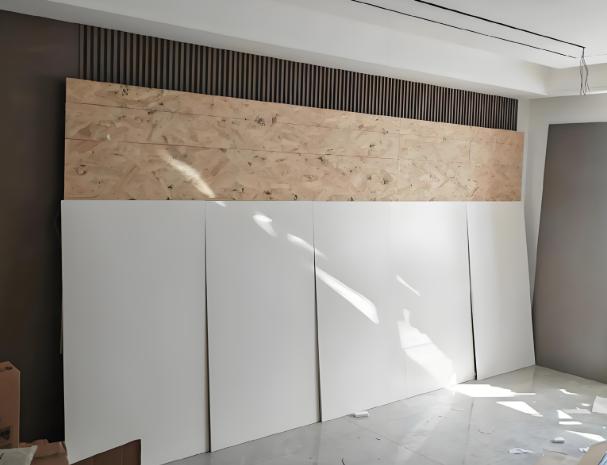
This is especially true when heavy items like TVs, cabinets, or picture frames need to be mounted—improper fastening is a serious safety issue and can shorten the wall system’s life.
To prevent these issues, therefore, one needs to use fasteners for wallboard materials. The nature of the specialized fasteners ensures a firm grip, enhances stability, and provides maximum long-term stability and durability to the installation.
Part 2. Why is It Important to Choose the Right Fasteners for Wallboard?
Wallboard, or specifically drywall or gypsum board, is a bit of a soft material that doesn’t have much holding power by itself, especially without studs or framing to back it up. Incompatible or unsuitable fasteners can bring all kinds of issues, including:
Insecure Attachment and Falling Objects
Plain screws also do not hold well in wallboard, and mounted items such as televisions, cabinets, or shelves can get knocked loose and fall over. Not only does this ruin the wall but it is a serious safety issue as well.
Wall Damage and Expensive Repairs
Poor fasteners may crack or tear the wall surface during installation or under stress, leaving ugly holes or damage. This typically requires additional patching, sanding, and painting, raising repair time and cost.
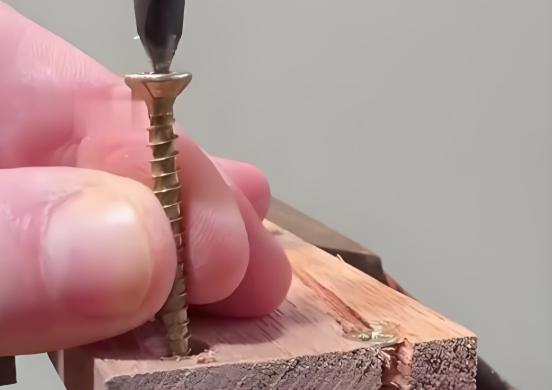
Shorter Lifespan and Repetitive Replacements
Poor or incompatible fasteners tend to come loose, rust, or deteriorate with the passage of time, requiring repetitive replacements and undermining the structural support of the installation in the long term.
Reduced Efficiency and Safety during Construction
Excessive rework due to loose or failed fasteners can seriously impede the construction process. In other cases, especially in overhead or electrical installations, improper fastening may even compromise the safety of workers.
Part 3. Common Types of Fasteners Suitable for Wallboard
Proper selection of the fasteners is a prerequisite while installing wallboards and supporting items. Based on the properties of the material used to make the wallboard and the load requirement, different types of fasteners exhibit different advantages in structure, method of installation, and load-carrying capacity. Mentioned below are some of the common and effective types of fasteners that are widely applicable for wallboards.
1.Drywall Screws
Drywall screws are the simplest and most common fasteners specifically for drywall installation to wood or light-gauge steel studs. They are created with penetration and hold capability and for quick, flush, secure fastening without damaging the wall surface.
- Fine threads provide excellent hold in drywall and framing
- Bugle head rests flat against the wall surface for smooth finishing
- Constructed to suit power drivers for quick and effective installation
Best for: Hanging drywall sheets on metal or wood studs; ideal for constructing wall and ceiling frame assemblies.
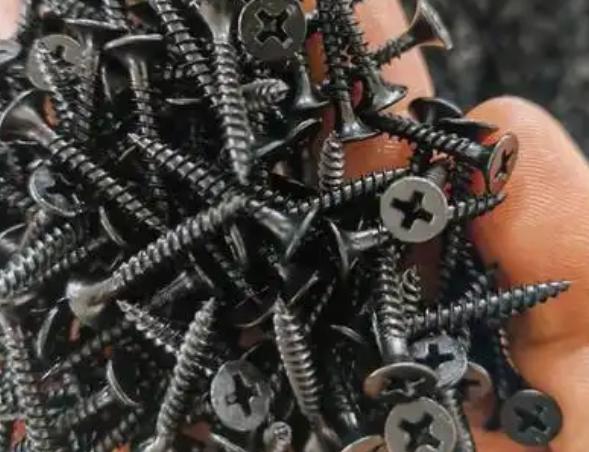
2.Plastic Wall Anchors
Plastic wall anchors offer a budget-friendly, do-it-all answer to hanging lightweight objects on drywall where studs are inaccessible. They expand behind the wall for extra grip and pull-out resistance, making them a favorite choice for general household use.
- Simple to use: drill pilot hole, drive anchor in
- Projects out of the wall to provide additional support
- Used alongside standard screws
Best for: Supporting light objects such as picture frames, small ledges, or decorations securely onto drywall.
3.Toggle Bolts
Toggle bolts are a heavy-duty hollow-wall and ceiling fastener. With spring-loaded wings, they transfer load more evenly to more of the wall surface, reducing stress and increasing load-carrying capacity. They work best to suspend heavier items in hollow drywall spaces.
- Comprising a spring-loaded threaded bolt and toggle wings
- Wings spread behind the wall, keeping the fastener in place
- Can sustain heavy weight with less wall damage
Best for: Supporting heavy objects such as TV brackets, large mirrors, or cabinets from bare walls.
4.Molly Bolts
Molly bolts are metal expanding anchors that provide a firm, semi-permanent mounting solution for drywall. When a screw is tightened, the metal sleeve expands against the rear of the wall and grips strongly in place. Molly bolts can be reused and are a suitable solution for medium-load applications.
- Inserted into a pre-drilled hole, and seated by tightening a screw
- Secures firmly to the back of drywall
- More long-lasting strength than plastic anchors
Suitable for: Supporting medium-weight fixtures like wall clocks, light fixtures, and shelves, especially where reinstallation might be expected.
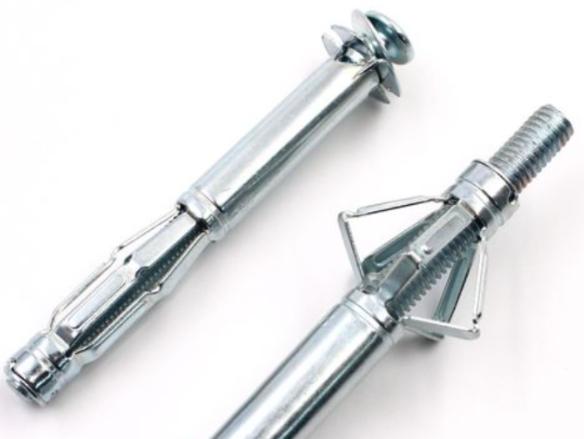
5.Self-Drilling Anchors
Self-drilling anchors are a do-all for drilling and anchoring with one fastener. They’re the favorite among DIYers and for fast and easy installs, no pilot hole required, and give reasonable holding strength for light to medium loads.
- Features a sharp, pointed tip for screwing directly into drywall
- Simple and fast installation with just a screwdriver or drill
- Delivers predictable performance without additional tools
Suitable for: Quick installations of materials like picture frames, clocks, or light shelves—appropriate for do-it-yourself use and house decoration jobs.
Part 4. How to Choose the Right Fasteners for Wallboard?
Before purchasing fasteners for your wallboard installation or mounting needs, it is required to consider a few vital factors to enhance safety, stability, and durability. Have a look at this guide comprehensively for the best possible choice according to your own condition:
| Assessment Factors | Recommended Fasteners |
| Is there stud or framing support in the wall? | Drywall screws, Self-drilling anchors |
| Light-weight loads (under 5 kg / 11 lbs) | Plastic wall anchors, Self-drilling anchors |
| Medium-weight loads (5–15 kg / 11–33 lbs) | Molly bolts, Toggle bolts |
| Heavy loads (over 15 kg / 33 lbs) | Toggle bolts or direct fastening into studs |
| Frequent repositioning and removal necessary? | Molly bolts (reusable and better for adjustments) |
Detailed Guidance
If your wallboard is mounted firmly over wooden or metal studs, drywall screws or self-drilling anchors can secure light to medium loads firmly straight into the frame, with the most rigid connection.
Plastic or self-drilling anchors should be used with light items such as small picture frames or ornaments that weigh less than 5 kg, which are able to grasp well without damaging the wall.
To support mid-weight objects weighing 5 to 15 kg, Molly bolts and toggle bolts give more support by spreading behind the wall or load distribution over a wide area to reduce stress on drywall.
For the heavier items weighing more than 15 kg, toggle bolts give the most anchoring in hollow walls by distributing the load over a wide area. Where there are studs or the frame available, finding and screwing directly into studs or the frame is the safest way.
If you anticipate having to take down or move your mounted objects repeatedly, Molly bolts are the improved option because they still maintain good holding power even after multiple installations and removals.
Part 5. Common Mistakes and How to Avoid Them
In installing wallboard and mounting, improper fasteners or improper installation may not only reduce the quality of the job but also become safety risks as well as result in extra maintenance costs later on.
We will go over common errors and offer simple-to-follow tips on how to improve installation quality and ensure the safety and stability of your installed items.
Incorrect Screws:
Most installers use wood screws or plain nails to hold wallboard. Such fasteners lack the right thread design and pull-out capacity demanded in drywall and therefore do not offer good grip and more likelihood of loosening or falling.
Ignoring Wall Construction:
Not checking if the wall is hollow or stud-backed can lead to improper use of fasteners and installation failure. For example, using fasteners for solid backing in hollow drywall will not hold well.
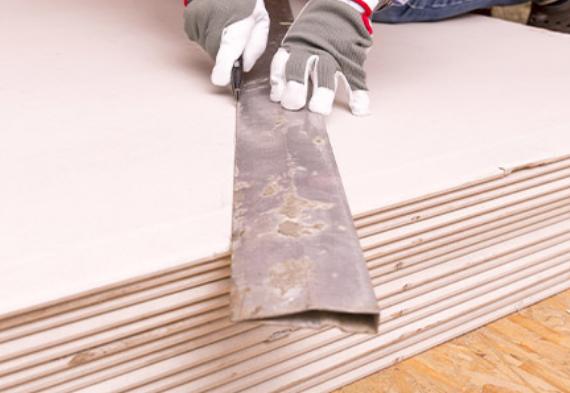
Overloading Lightweight Anchors:
Using heavy loads on light-duty plastic anchors to hold heavy objects overloads them, which may cause cracking or tearing of the wallboard and expose damage and safety hazards.
Recommendations:
To avert such issues, always use stud finders or bolt locators pre-use for exact determination of wall structure before installing. Choose the type and size of fastener based on both wall condition and object weight to be installed. Such thorough preparation ensures a stable, long-lasting installation and denies risk of damage or injury.
Part 6. KENENG Provides You with High-Quality Wallboard Fasteners
Being a leading manufacturer in the industry, KENENG offers a complete range of reliable wallboard fastener options, including but not limited to:
- General drywall screws available in various head types and lengths
- High-strength self-drilling anchors
- Customizable materials, plating, and corrosion protection
We promote customization and mass supply to meet the needs of construction, remodeling, hardware retail, and other purposes. At KENENG, you can be sure of durable products and tailored solutions that ensure safe and efficient wallboard installation.
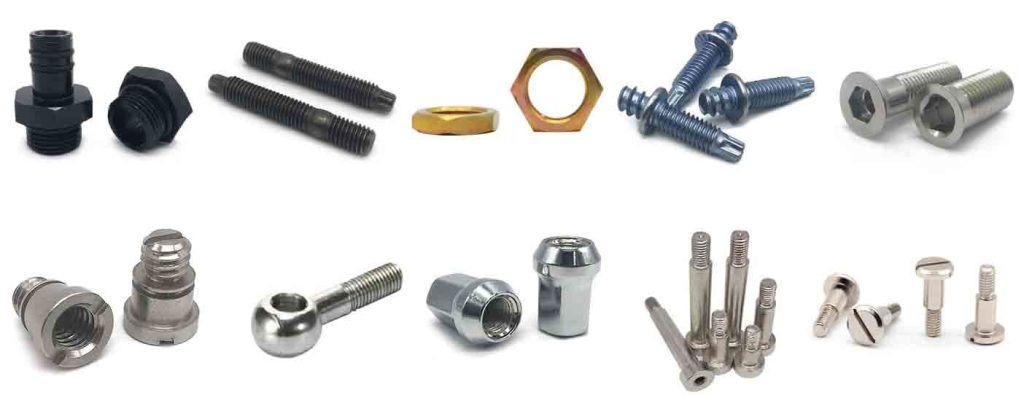
Final Words
The use of the right fastener type in wallboard installation and mounting is essential to offer both structural value and aesthetics. By making the correct selection of fasteners that meet the load capacity, composition of the wall, and usage requirement, you will achieve a safe, efficient, and long-lasting installation.
If you need good-quality wallboard fasteners, please feel free to contact KENENG. We are happy to provide you with professional advice and one-stop fastening services based on your needs.

